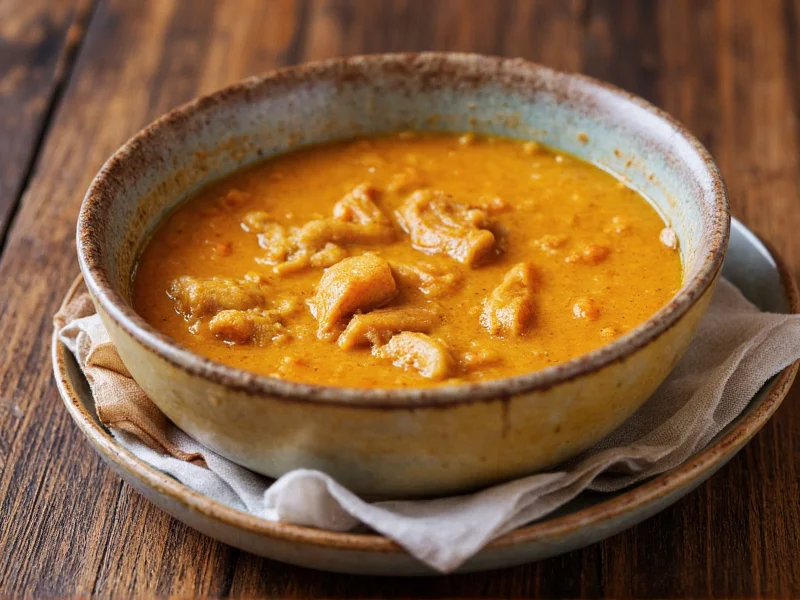If you're searching for 'cocky leeky soup,' you've encountered a common misspelling of the traditional Scottish dish known as cock-a-leekie soup. This classic Scottish comfort food features chicken, leeks, and sometimes prunes, with origins dating back to the 16th century. The name comes from 'cock' (referring to a rooster) and 'leekie' (Scottish for leeks), not from any 'cocky' attitude.
The History and Cultural Significance
Cock-a-leekie soup has been warming Scots since the 16th century, with the first written recipe appearing in 1598 in The Practicke Part of Physic by Timothy Bright. Originally made with a cockerel (an adult male chicken), the soup provided essential nutrition during Scotland's harsh winters. Scottish households traditionally prepared this dish for special occasions, particularly Hogmanay (New Year's Eve), symbolizing prosperity for the coming year.
The inclusion of prunes—a distinctive feature of traditional cock-a-leekie—reflects historical trade connections between Scotland and France. While some modern versions omit this ingredient, authentic Scottish preparations maintain this sweet-savory balance that defines the dish's unique character.
Traditional Ingredients and Their Purpose
Understanding the role of each component helps recreate an authentic Scottish cock-a-leekie soup experience. Unlike generic chicken and leek soups found worldwide, the traditional Scottish version follows specific conventions that distinguish it from similar dishes.
| Ingredient | Traditional Role | Modern Practical Approach |
|---|---|---|
| Cockerel or stewing hen | Provides rich collagen and deep flavor from older bird's connective tissue | Chicken thighs or whole chicken with bones for best flavor extraction |
| Leeks (3-4 large) | Primary vegetable, contributes sweet, mild onion flavor without sharpness | White and light green parts only, thoroughly cleaned of grit |
| Prunes (6-8) | Traditional sweet counterpoint that balances savory elements | Soak in warm water first; some modern recipes use dried apricots instead |
| Pearl barley (¼ cup) | Traditional thickener that adds heartiness without flour | Rinse before adding; substitutes include rice or small pasta |
| Chicken stock (4 cups) | Base liquid that enhances chicken flavor | Homemade preferred; low-sodium store-bought works in a pinch |
Authentic Preparation Method
Creating genuine cock-a-leekie soup requires patience and attention to detail. The traditional Scottish approach emphasizes slow cooking to develop complex flavors while maintaining ingredient integrity.
Begin by thoroughly cleaning 3-4 large leeks, slicing them into thin half-moons. In a heavy-bottomed pot, combine your chicken pieces, leeks, 4 cups of chicken stock, ¼ cup pearl barley, and seasonings (traditionally just salt, pepper, and perhaps a bay leaf). Bring to a gentle simmer—never a rolling boil—as aggressive boiling makes chicken tough and clouds the broth.
The critical step in traditional cock-a-leekie preparation involves simmering for 1.5-2 hours. This extended cooking time allows collagen from the chicken bones to break down into gelatin, creating that characteristic rich mouthfeel. About 30 minutes before serving, add your soaked prunes. Skim any foam that rises to the surface during cooking for a clearer broth.
Modern Variations and Serving Traditions
While purists insist on the traditional recipe, contemporary interpretations of cock-a-leekie soup offer adaptations for different dietary preferences and time constraints. Many Scottish chefs now create vegetarian versions using mushroom broth and omitting prunes for a more universally appealing profile.
Traditionally served in deep bowls with a sprinkle of fresh parsley, cock-a-leekie soup often appears as the first course of a Scottish meal. In Scotland, it's commonly paired with oatcakes or traditional bannock bread. The soup's comforting nature makes it particularly popular during Edinburgh's cold winters and at Highland gatherings.
For the most authentic experience, serve cock-a-leekie soup piping hot but not scalding—Scottish tradition values savoring the complex flavors rather than consuming hastily. Leftovers improve overnight as flavors continue to meld, making this an excellent make-ahead dish for entertaining.
Common Mistakes to Avoid
Many home cooks make critical errors when attempting traditional cock-a-leekie soup. The most frequent mistake involves using young broiler chickens instead of older birds or stewing hens, resulting in a broth lacking depth. Another common issue is adding leeks too late in the cooking process, preventing their flavor from fully integrating.
Overlooking proper leek cleaning leads to gritty soup—a problem easily avoided by soaking sliced leeks in cold water and rinsing thoroughly. Some modern recipes skip the traditional prunes entirely, creating a dish that's merely chicken and leek soup rather than authentic cock-a-leekie.











 浙公网安备
33010002000092号
浙公网安备
33010002000092号 浙B2-20120091-4
浙B2-20120091-4